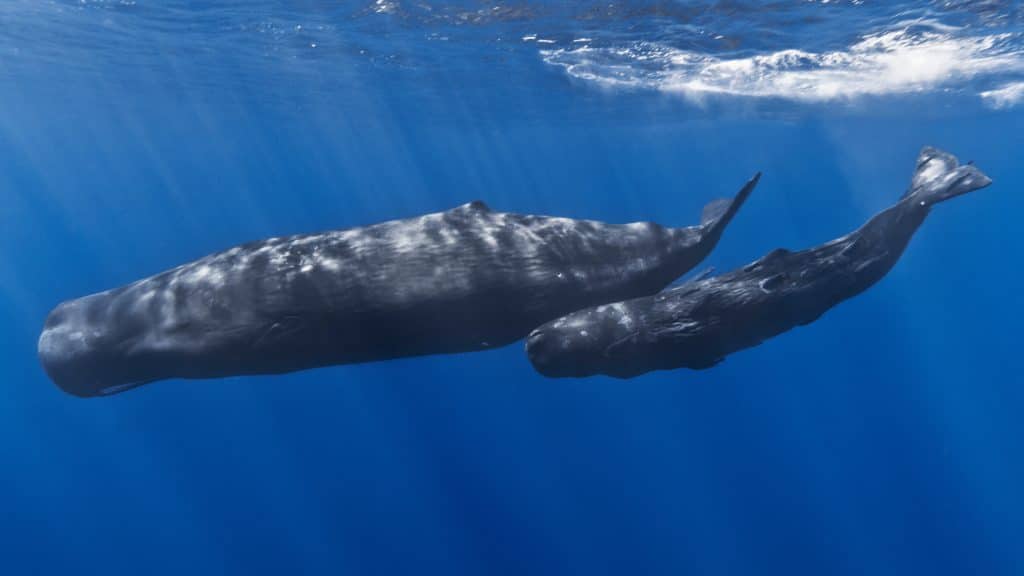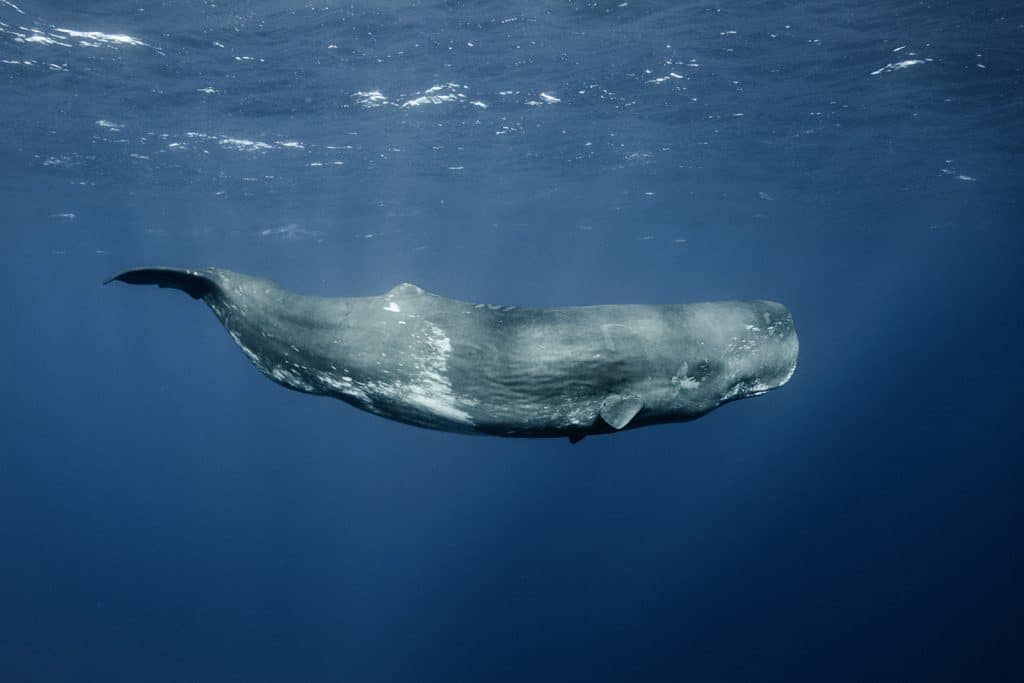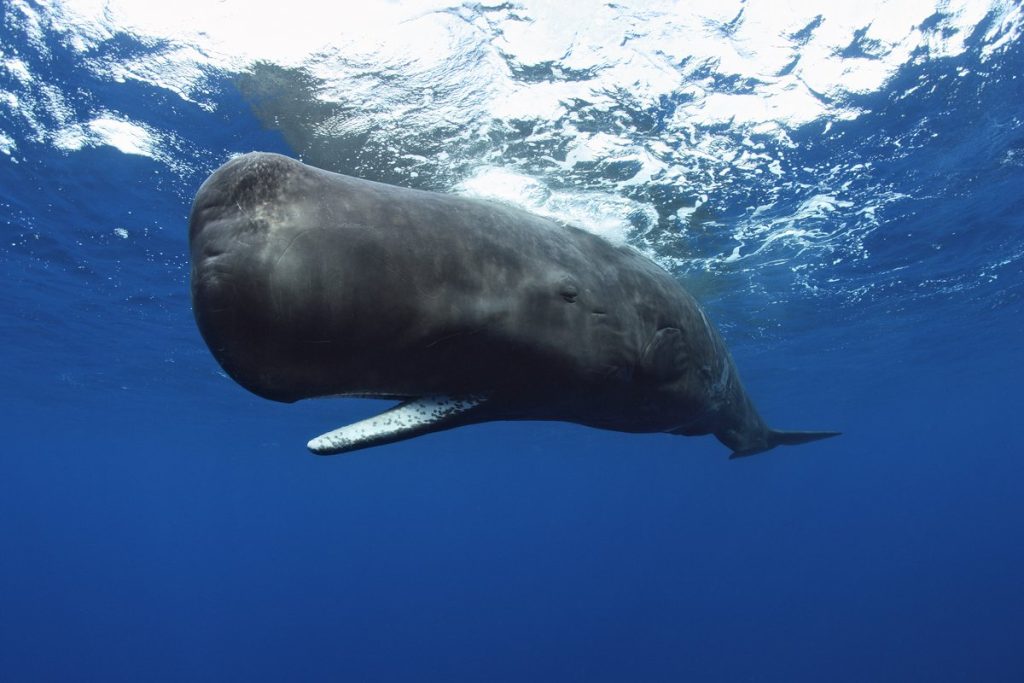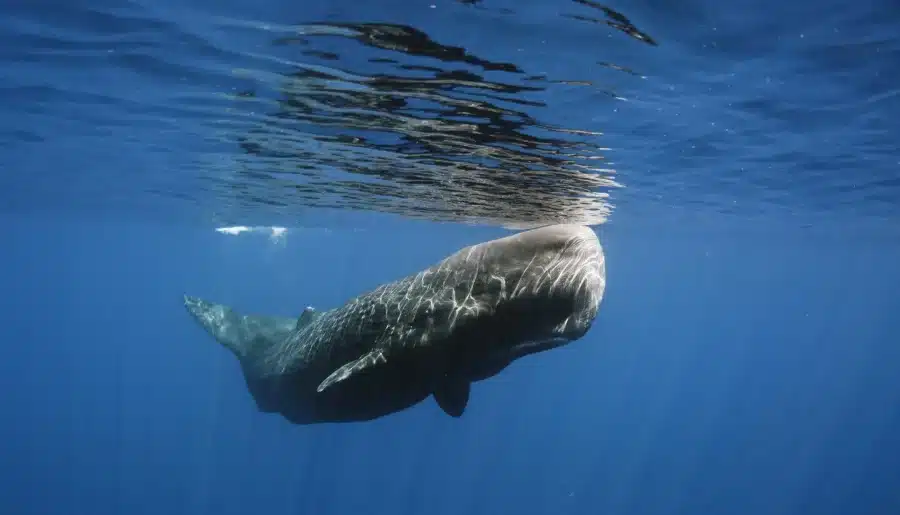Did you know that a sperm whale, also known as a cachalot, is the largest-toothed whale and the largest-toothed predator in the world? It also has the largest brain of any creature that has lived on Earth.
Amazing, right?
In the ocean, these whales can easily be spotted by their enormous square heads and big, rounded foreheads. Their heads also contain an oil sac filled with a white waxy substance called spermaceti, which scientists believe helps them with buoyancy control and echolocation.

Buoyancy control is the ability to control how high or low an animal floats in water. On the other hand, echolocation is an animal’s ability to navigate its surroundings by making sounds and listening for the echoes that bounce back from things around it.
Sperm whales are also known for their deep diving abilities, as they can dive thousands of deep in search of their favorite food, mostly giant squids.
But would you believe me if I told you another cool fact? Scientists recently discovered that sperm whales talk a lot! They use a complex system of clicks called “codas” to communicate.
Imagine having underwater conversations!
Now, you might wonder, “How did the scientists discover this?”
Back in 2008, Shane Gero, a Canadian biologist, was observing sperm whales off the coast of Dominica when he witnessed something extraordinary. Two male whales, known as Drop and Doublebend, were engaging in what seemed like a conversation.

Sperm whales communicate using a rhythmic series of clicks called codas, and Gero had been using underwater recording devices to capture these sounds for three years. However, the interaction between Drop and Doublebend was unlike anything he had heard before.
The two whales clicked back and forth for 40 minutes, displaying various behaviors. This experience made Gero realize that to understand whale communication truly, we need to consider the context in which these sounds are made.
This discovery has inspired him to continue his research and get to know hundreds of sperm whales for 13 years. Gero believes that understanding who the whales are and their actions while making their sounds is essential to unlocking the secrets of whale communication.
Gero has long wondered what these sperm whale clicks mean. However, it can take researchers hours to organize just a few minutes of sperm whale recordings. So, he collaborated with AI researchers in Project CETI (Cetacean Translation Initiative) to decode the sounds they’ve studied for years.
CETI is a non-profit organization that uses advanced machine learning and robotics to listen to and translate the communication of sperm whales. Its research is focused on the Eastern Caribbean, particularly in Dominica.
The project aims to create comprehensive data on whale communication and behavior to train their technology to understand and translate it.
The scientists there want to understand how whales communicate, including their communication structure and if there are patterns similar to human language. They also want to understand how whales behave when making or hearing sounds. Researchers want to understand this information by using the latest artificial intelligence technology.
Gero has kept detailed records, including thousands of annotated recordings of clicks that describe which whale is speaking, which clan they belong to, who they are with, and their activities at the time.

Caribbean sperm whales often use a pattern known as “1+1+3”, making two slower clicks followed by three faster ones. Groups of these whales can have many different sequences of clicks with varying speeds.
Previously, it was believed that sperm whales had only 21 coda types. However, after studying almost 9,000 recordings, the CETI researchers identified 156 distinct codas. They have also recognized the basic building blocks of these codas, which they liken to a “sperm whale phonetic alphabet” similar to phonemes in human language.
Phonemes are the smallest sound units in a language that can distinguish meaning. They are like the building blocks of spoken words, helping us differentiate between words with different meanings.
For example, the word “cat” has three phonemes: /k/, /a/, and /t/. If you change any of these sounds, you get a different word, like “bat” or “mat.” Phonemes are important because they help us understand and produce the words we use daily.
The clicks in the codas vary among different groups, indicating possible cultural differences similar to Morse code. The codas also show that whales change the tempo of their communication with each other.
Pratyusha Sharma, a PhD student at MIT and lead author of a study, explains that the AI identified small changes in how sperm whales communicate.

Each coda consists of between three and 40 rapid-fire clicks. The researchers found that the whales varied the overall speed of the clicks and sped up and slowed down while delivering them, similar to the musical technique of “rubato.”
Rubato is a musical term that means the performer can be flexible with the tempo of the music. It allows musicians to play with the speed of the music, making some parts faster and others slower for expression and feeling.
The researchers also noticed that, at times, the sperm whales even added an extra click at the end, which Sharma likens to musical ornamentation.
Musical ornamentation is like adding extra decorations to music to make it more interesting and beautiful. Just like adding patterns or designs to something, musical ornamentation adds extra notes or special effects to the music to make it sound really cool and fancy, such as a trill.
So, what does all of this tell us about how smart sperm whales are? Can they think things through or remember and pass on information?
Scientists suggest that we don’t know much yet about the intelligence, reasoning, and information-sharing abilities of sperm whales. They believe we must first understand how these whales communicate and what matters to them.







